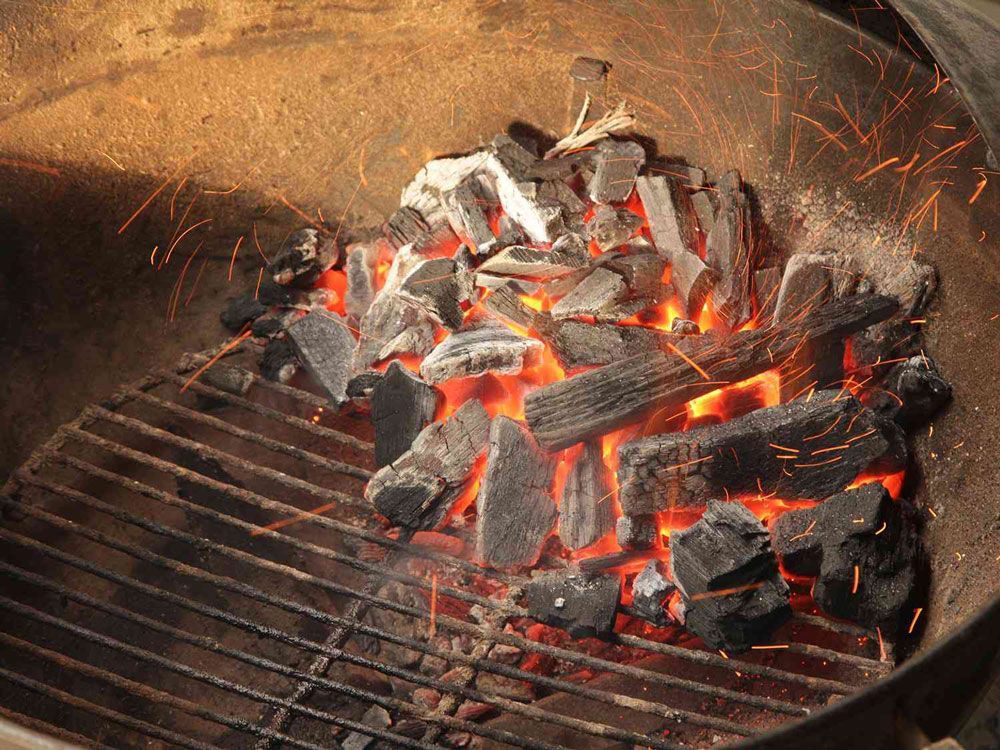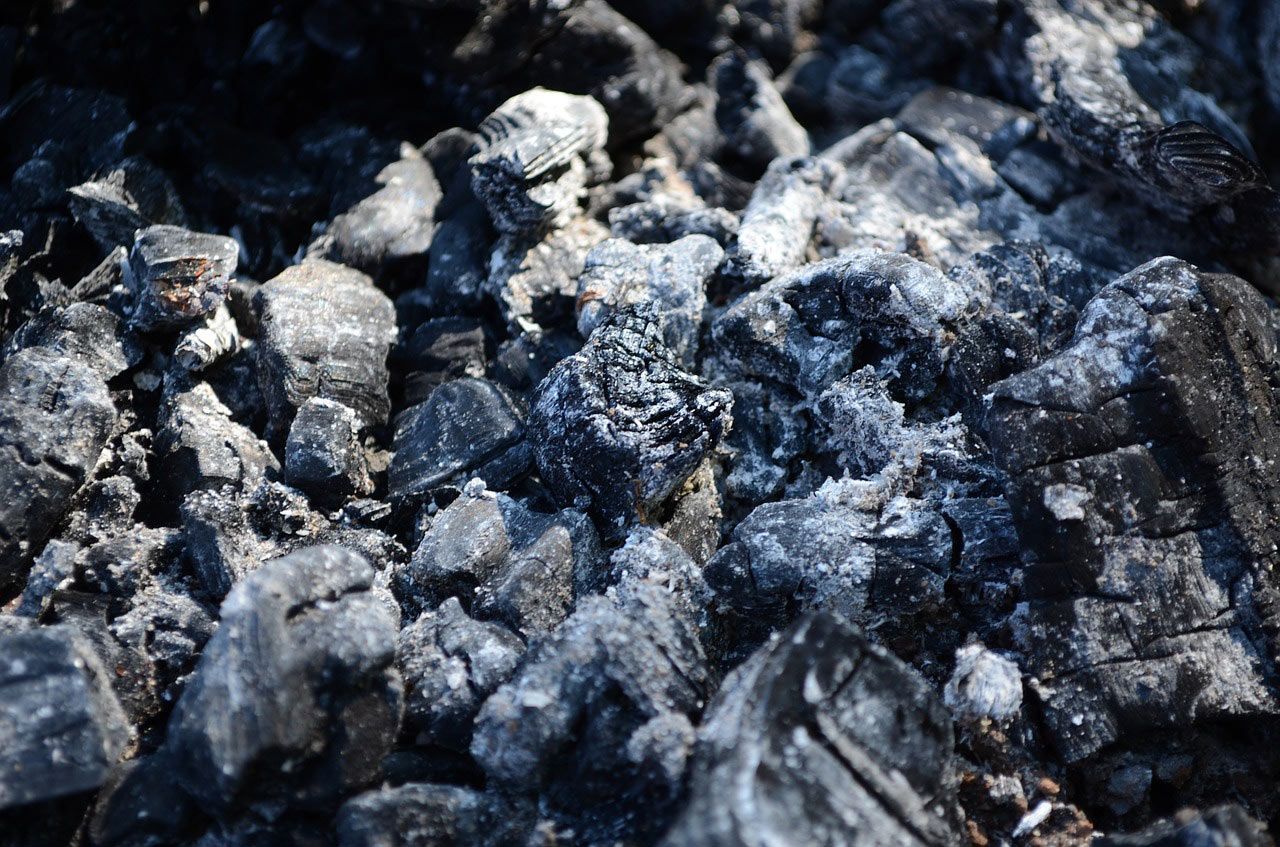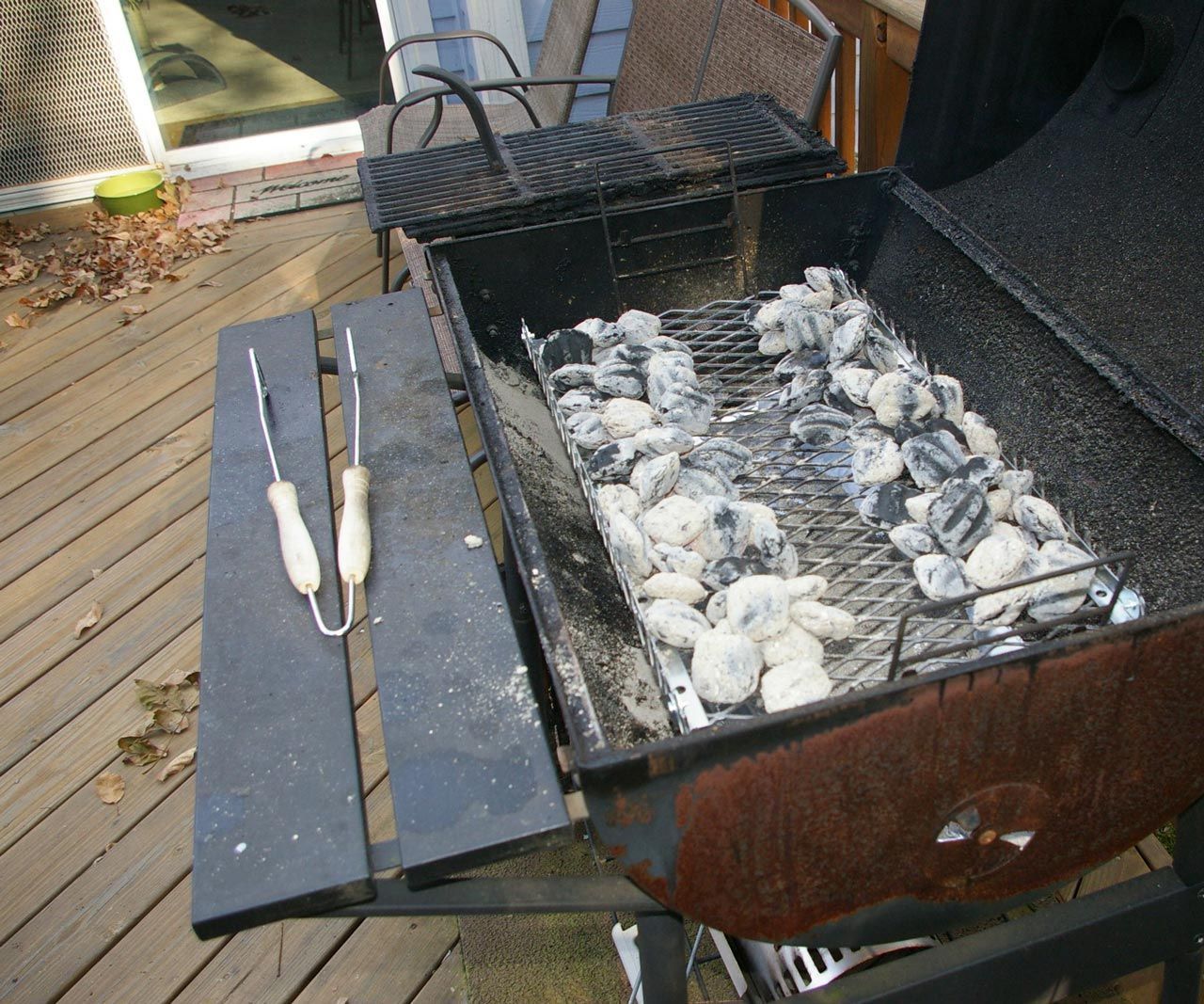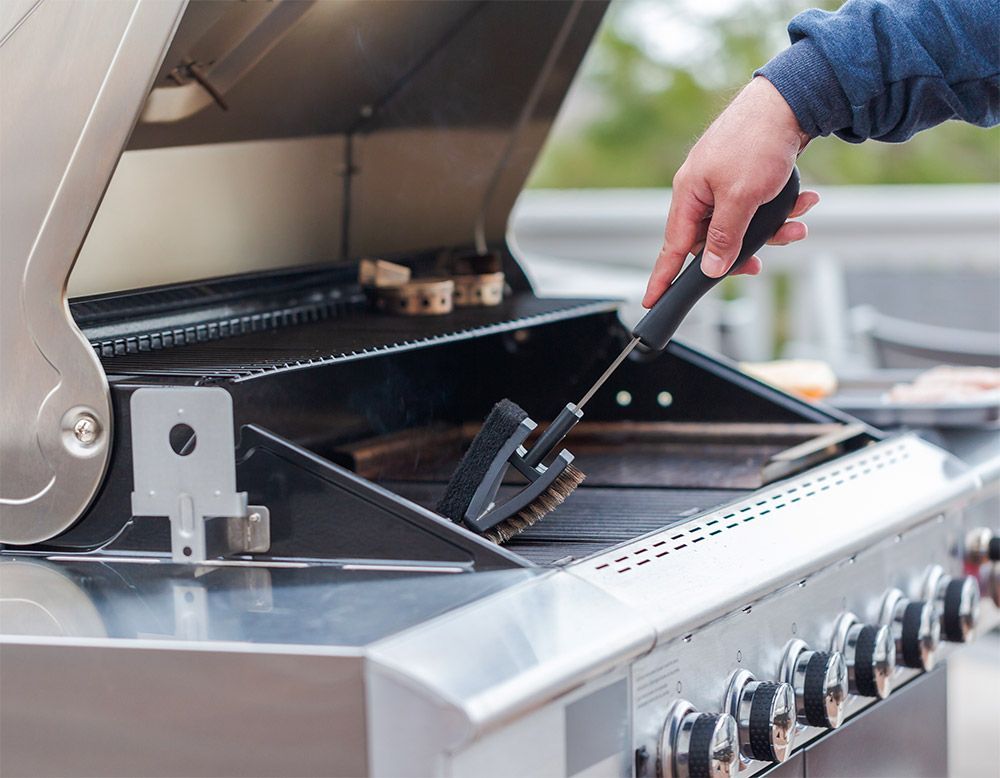Our recommendations are made independently. We may receive commissions from purchases made via our links.
How to Put a Charcoal Grill Out
Putting out a charcoal grill requires proper technique. In this guide on how to put a charcoal grill out, you can learn the safest methods.
A charcoal grill is arguably the best, most authentic way to kick-start your BBQ.
However, while cooking on charcoal does result in some tasty, immensely aromatic dishes, it can be quite complicated to use properly. From the first flame to the extinguishing phase, you will need to have proper technique throughout. If you don’t, you may damage the grill or, worse, injure yourself.
This guide can show you how to put a charcoal grill out quickly and safely.

Why You Should Put Out a Charcoal Grill
After you’re done using the grill, the charcoal pellets inside will still be flaming. They won’t stop until one of two things happen: either they burn out in time or you put them out yourself.
Some users opt for the former and just let the charcoal pellets naturally burn out on their own. While this method will put out the fire, it is not recommended.
The fumes rising from the charcoal are packed densely with hazardous materials like soot, benzene, and phenol. They aren’t good for children, the elderly, or pets to breathe in. Additionally, charcoal may take up to 48 hours to completely burn out naturally. As you can’t sit still and supervise the grill for 2 days straight, the active grill poses a fire hazard.
Last but not least, if you care about the environment, it’s important that you take out the grill as soon as possible. You don’t want your grill to exhale carbon monoxide/dioxide into the atmosphere for longer than needed.

How to Safely Put Out a Charcoal Grill
The best way to take out a charcoal grill is to starve the fuel pellets of oxygen. They need oxygen in order to burn, so if you cut out the air, they will flame out in a couple of hours.
Step 1: Shut Down the Grill
Don a pair of oven mitts to protect your hands from the heat.
Take out all of the racks inside so that the charcoal underneath is completely exposed. Grab the lid of the grill and close it. If your grill has air vents, make sure they are closed too. You want every avenue through which air can enter the combustion chamber to be sealed tight.
Step 2: Wait Until the Pellets Are Extinguished
With the lid and vents all closed, it’s time to play the waiting game. It’s going to take the charcoal only around 30 to 45 minutes to flame off. However, the time that they will take to cool down is going to be a lot longer.
That’s why we highly recommend that you wait for at least 24 hours. But ideally, you should give the grill 48 hours to take care of itself. It is a long time to wait, but after 2 days, you’re guaranteed a cold and safe combustion chamber when you open it up.
Step 3: Ensure That the Coal Is Cool
The job is not 100% done after the charcoal pellets are put out. You still need to clean up the messy pile of ash and half-burnt pellets inside.
But before you begin the clean up, ensure that the pellets are completely cool. They should be near or at room temperature.

The reason behind this is because still-hot coals pose a grave fire hazard. If you put hot coals in a trash can, they may set the other garbage within the can on fire, causing a literal dumpster fire. And if you put hot coals into a plastic trash can, the hot pellets can melt and eventually ignite the trash can (this is why you always have to dispose of coals in a metal trash can).
Hold your bare hand a short distance from the coals. You shouldn’t feel any heat wafting from the pellets. If you do, the coal is still a bit hot, so leave them be for a few extra hours.
Alternatively, you can use a steel fire poker and sink the tip of it into the coal for a minute or two. Take it out and feel the tip. If it’s cool or only slightly warm, the charcoal is ready to be disposed of.
No matter how cool the pellets look or seem to be, you should never touch them directly.
Step 4: Scoop the Ashes and Pellets
For this step, you will need a large sheet of aluminum foil and an ash bucket. If you don’t have an ash bucket, you can use a metal dustpan (do not use plastic).
Scoop the ashes and burnt pellets with a small trowel from the grill and put them into the bucket or dustpan.
While you’re at it, you should look for pellets that haven’t been fully burned and still look relatively whole. Keep them in the grill and save them for later. Only scoop up and dispose of the ones that are nearly gone.
Tear out a large sheet of aluminum and lay it flat on a table or the ground. Tip the ashes and the spent pellets onto the aluminum.
Wrap up the aluminum foil into a compact, tight package. The foil’s job is to prevent the pellets from setting anything on fire. Although they should be totally cooled down by then, it’s better to be safe than sorry.
Step 5: Dispose of the Wrapped-Up Ashes and Pellets
Grab the package and dispose of it in a metal trash can. Like we mentioned earlier, do not put the pellets — no matter how cool — into a plastic trash can. If they flare up again, the risk of a big fire is going to be high.
Step 6: Deal With the Remnants
There are usually still small pockets of ashes and a few whole bricks of pellets leftover after you’ve scooped.

For the ashes, use something like a metal spatula to scrape them off the grill and into the ash bucket or dustpan. Inspect the areas surrounding the air vents. These are the places where ash tends to collect. If they build up too thickly, they can clog up the vents and prevent you from getting a clean ignition the next time you use the grill.
Package up the ashes like before and throw them away. But if you have plants or a garden around the house, ashes can be added into compost heaps. They’re a good source of potassium and other elements for your plants.
As for the remaining pellets, pick them up with a pair of tongs and transfer them to a separate metal bucket from the ashes. If you don’t have an extra bucket to spare, you can spread another layer of aluminum foil on the ground and put them on it. Don’t throw these away. They can be reused.
Step 7: Clean Up the Grill
Clean up every part of the grill with a wire brush. Scrub all of the burnt food debris and remaining ash and soot from the grates and the grill’s parts.
Once that’s done, rinse the whole grill with common dish soap and clean water. It may seem like extra work but it will go a long way to maintaining optimal grill function and extending the life of your grill.
If you would like to know more, we have detailed cleaning guides that you can check out. This guide shows you how to clean a grill from top to bottom. As for the grates, a separate article on how to clean grill grates is available, as well.

Step 8: Prepare It For the Next Use
Pick up the leftover charcoal briquettes that you picked out earlier and put them back into the combustion chamber. You’ll save some briquettes this way.
Close the lid and you’re finished!
How to Put Out a Charcoal Fire with Water
If you don’t want to wait several hours for the charcoal to burn out, there is another method. However, be warned that though this method may be quick, it can be quite risky too.
Coal burns at a very high temperature (600°F – 750°F). When it meets cold water, it causes the water to immediately boil into a huge plume of hot steam. The water will also fiercely bubble, splashing hot water everywhere. This can lead to some nasty burns.
As a result, if this is how you want to do it, exercise extreme caution.
Step 1: Cool to Medium Heat
Do not attempt to douse the pellets immediately. The extreme heat of fully active pellets will cause a huge splash of hot water.
Instead, perform a shut down like we instructed earlier (shutting the lid and the vents). Wait for around 5 or 6 hours until the pellets have cooled down to medium heat.
You can check by keeping your hand a short distance from the coal. You should be able to hold your palm there for around 6-7 seconds before the heat becomes uncomfortable.
Step 2: Prepare a Bucket of Water
Never directly douse the grill with water. The heat from the coal and the cold water will cause the grill to crack from temperature shock.
Instead, fill up a bucket of cold water and set it aside. You will be using it to cool down the coal.
Step 3: Cool with a Spray Bottle
Introducing water immediately is a recipe for disaster. Even after 5 or 6 hours, the charcoal will still be quite hot.
So, use a spray bottle and spritz a little bit of water onto the coal first. The small amount of water will lower the temperature of the pellets without causing a dramatic reaction. It will also reduce the chance of the pellets causing a steam explosion in the next step.
As you are spritzing, stir the coal with a metal fire poker. Do this until the pellets are sufficiently cool.
Step 4: Pick Up Each Pellet and Dip in Water
Don your oven mitts and a long-sleeved leather jacket for extra protection (if you have one.) The leather will protect you from any hot splash that may occur. You can even use a long-sleeved shirt.
Use a pair of long-handled metal tongs and pick up each pellet. Dip each one individually in the cold water bucket. Be prepared for the steam and splashes.
After a few pellets, the water may turn warm. Flush it away and fill it with new cold water.
Repeat until all of the hot pellets are dealt with.
Step 5: Dispose
Dispose of the cooled pellets and the remaining ashes as instructed earlier (steps 4 and 5). Then, clean the grill and prepare it for the next light (steps 6, 7, and 8).
What to Do in the Event of a Flare-Up
A flare-up is one of the worst case scenarios that can happen while you’re shutting down your grill. It happens when grease from the food drips down and interacts with the hot coal, causing what is essentially a grease fire. The result is a gigantic flame.

This doesn’t just happen while you’re cooking. When you’re shutting down the grill, grease could still remain on the racks or the parts and cause flare-ups.
When it happens, no matter what you do, never throw water on it. Throwing water toward a grease fire will only make it worse. Instead, quickly put on a pair of heat-resistant gloves and shut the lid of the grill. Doing this will smother out the flame by cutting off the oxygen.
If you can’t get to the lid, grab a fire extinguisher. Every grill user must always have a fire extinguisher nearby in case of emergencies like this.
In the worst case scenario, call the emergency services to help you out. But the hope is you will never have to!
Conclusion
With your newly-learned knowledge on how to put a charcoal grill out, you’re one step closer to becoming a true griller. Though a charcoal grill can be complicated to use and take time to perfect, the food that it cooks is undoubtedly sublime. You won’t regret spending the time and effort to learn how to master it!
While we’re on the topic, here is our collection of 10 best charcoal grills in 2021. Check it out if you’re looking to invest in a new charcoal grill this year.





